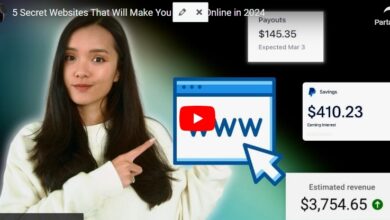Instagram influencer marketing: what brands really need to know
Not 100% sure what Instagram influencer marketing is all about?
Well, now’s the time to learn!
That’s because influencers aren’t niche anymore.
Heck, the influencer space has ballooned into a multi-billion dollar phenomenon. Brands of all sizes are eager to find ways to feature creators in their campaigns.
It’s no surprise that Instagram is the go-to network for influencers. Recent stats say that carousels, Reels and Stories are among the most popular content types for creators.
As creators continue to dominate the platform, brands need to know how Instagram influencer marketing works. In this post, we’ll break down the basics!
What is Instagram influencer marketing, anyway?
Influencer marketing is a promotional strategy based on partnerships between brands and social media creators (“influencers”).
The concept is simple enough. Brands partner with creators to promote products and then compensate those creators for their efforts.
What makes someone an influencer on Instagram, though?
Fair question! The term refers to the level of influence that these social media creators have on their audiences. That’s because everyday consumers look to influencers for product recommendations.
In short, influencers are users that influence purchasing decisions. One-third of people on Instagram have been inspired to buy something based on an influencer’s post.
Most influencers don’t actually refer to themselves by the term, though. Creator or content creator is more common these days. Although influencer used to be synonymous with celebrity, times have changed.
You don’t need millions of followers to be considered an Instagram influencer. For example, check out the various types of creators as broken down by Influencer Marketing Hub including:
- Mid-tier influencers: between 50,000 and 500,000 followers
- Micro-influencers: between 10,000 and 50,000 followers
- Nano-influencers: between 1,000 and 5,000 followers
We’re seeing more purchases being driven by creators with smaller audiences. These creators typically have higher engagement rates and feel more “authentic” than macro-influencers. Still, the distinction between digital creators and influencers is a hotly debated topic.
What are some examples of Instagram influencer marketing?
Chances are you’ve encountered your fair share of Instagram influencers in the wild. Below are a few examples of influencer content in action.
Sponsored content (#ad or #gifted posts)
Sponsored posts are disclosed by creators with a tag such as #ad or #gifted if they were given the product for free. Through gifting, brands provide creators with free products in exchange for a post. Sometimes additional compensation is also offered.
Below is an example from BoxyCharm. Frequent sponsored and gifting campaigns makes their beauty products practically can’t-miss on Instagram.

Affiliate links
Many brands boast affiliate programs on Instagram. When someone clicks on an influencer’s affiliate link, that interaction is tracked. The affiliate is compensated if the person that clicked converts.
If you’ve ever seen the phrase “link in bio” when referring to a product, you’re likely looking at an affiliate post. Many influencers will also have static affiliate links in their bios through Instagram tools like Linkt.ree.

Reposting Instagram influencer content
Brands will often supplement their own Instagram content strategy with posts from influencers.
For example, a company might reshare an influencer’s photo shouting a product to their Stories feed. Mixed with organic content and customer tags, the influencers’ posts fit in seamlessly.
What are the benefits of Instagram influencer marketing?
So, why are influencer relationships worth the time and effort? Below we highlight the key benefits for brands.
Greater reach and exposure
Brand accounts have been hit hard by the Instagram algorithm when it comes to reach and engagement.
On the flip side, creator accounts are thriving. Influencers often boast some of the most engaged-with posts you can find on Instagram.
But beyond that, also consider that influencers can boost the exposure of brands by introducing them to a larger audience. For example, check out Hero Cosmetics’ 104,000 followers…

…and the creator they partnered with that currently has an audience three times that size.

See how that works? Especially for up-and-coming brands, influencers serve as an alternative to Instagram ads.
Increase social sales
Again, Instagram influencers represent an advertising channel for brands beyond traditional paid posts.
Collaborations, ambassadorships and product gifting can be more cost-effective than conversion-based campaigns.
There are tons of question marks around paid ad targeting. Through Instagram influencers, brands can estimate their promotions’ reach beforehand. This is based on factors like the creators’ audience size and engagement rate.
Consider that 43% of people already follow influencers on Instagram. There’s no denying the correlation between social sales and brand awareness. That’s why featuring creators as part of your funnel supports your sales efforts.
Show off your products in action
If you want to bring your products to life, influencers can make it happen.
This is where the “create” aspect of “content creator” comes into play. For example, skilled influencers understand:
- Relevant scenarios and applications of your product(s)
- The real-world struggles, challenges and pain points of your audience
- How to highlight your brand’s value proposition
Look no further than the beauty industry that’s brimming with talented influencers. From skincare hacks to makeup challenges and beyond, beauty influencers know how to flex their creativity.
Tapping into an influencer’s skillset, you can uncover totally new ways to sell your products.
Humanize your brand
Done right, Instagram influencer marketing can quite literally give your brand a face.
The importance of delivering authenticity can’t be overstated when competition is so fierce on social media. Breaking through the noise means having real people promote your brand and tell your story.
That’s because creators highlight the human element of your business. Again, influencers that reflect your audience know the struggles your customers are facing.
This highlights the popularity of brand ambassador programs right now. After all, who better to speak on your brand’s behalf than someone that legitimately loves your products?
Earn valuable influencer-generated content
Note how user-generated content can be repurposed throughout your marketing funnel. Well, the same applies to influencer-generated content. This includes:
- Featuring influencer content and reviews on product pages
- Promoting influencers throughout your content marketing strategy (think: social media, email)
- Use your influencer content as the basis for an ad campaign
According to Instagram, ads featuring influencers result in higher conversions and brand awareness.
Translation? The value of influencer content goes far beyond a creator’s initial post.
The basics of building an Instagram influencer marketing strategy
“Does influencer marketing still work?”
The answer is a resounding “yes!”
But it’s not as simple as getting products into influencers’ hands and expecting results.
There’s a lot of legwork that goes into putting together an influencer marketing campaign. Below are the big-picture basics of what goes into working with influencers on Instagram.
1. Find the right Instagram influencers
As the definition of influencer evolves to include smaller creators, there’s more talent out there than ever before.
This is both a blessing and a curse for brands. There’s a non-zero chance there are relevant influencers that’d be perfect to promote your product. The search can be daunting, though.
So, how do you find the right influencers? A few options include:
- Manual outreach through DMs and email. Ideally, you can find influencers that already know you and your product.
- Invest in an influencer database or matchmaking service. These third-party tools match your brands with influencers. Most of these platforms are reserved for brands that work with creators on a large scale.
- Hire a marketing agency. No huge surprises here. There are plenty of agencies that specialize in either reaching out to influencers or tapping into their own network of creators.
2. Figure out your compensation structure
Influencer compensation can be tricky.
Some brands exclusively gift products as a form of compensation. Others will pay anywhere between a few hundred to a few thousand dollars per post.
Pricing varies wildly based on factors like industry, follower count and engagement rate. Every influencer has a different rate and expectations.
Also, just because someone is a micro-influencer doesn’t mean they should be expected to work for free. A small creator with a highly engaged audience is invaluable in their own right.
Understanding the legality of influencer promotions is critical. Note that Instagram has its own rules about compensating users and disclosing paid promotions. So does the FTC.
3. Promote products that make sense for Instagram
Reality check: not every product is perfect for Instagram influencer marketing.
The products that tend to pop off are visually striking. There’s a reason why beauty, fashion and fitness brands are crushing it on Instagram. These industries have flashy products that lend themselves to tutorials and showcases.
Recent data also notes that the effectiveness of influencer campaigns is largely tied to demographics. In fact, roughly 90% of Instagram users that follow influencers are under the age of 35. Keep all of the above in mind before going all-in on influencers.
4. Empower your influencers to maximize engagement
Just because someone is an “influencer” doesn’t mean engagement is guaranteed.
It’s really easy to ignore spammy and low-effort influencer posts. The 2022 Sprout Social Index™ says people will overwhelmingly unfollow influencers if they’re too promotional.
This speaks to the importance of vetting creators. Likewise, brands have to provide briefs and instructions that empower them.
It’s a balancing act as you also don’t want to sacrifice your influencers’ creative freedom. Providing a product that your influencers’ audience is actually interested in is perhaps the best thing you can do.
5. Track your content and campaign results
Like with any other type of campaign, your social media metrics and KPIs matter.
Influencer marketing is often criticized due to its lack of concrete ROI. The reality, though? There’s plenty of data to track on behalf of your influencers. Not to mention KPIs relevant to your business goals. This includes:
- Engagement rate (ratio of followers to interactions) to gauge your influencers’ level of reach
- Followers and audience growth
- Conversions and link clicks (for affiliate campaigns)
- Reach to understand how many people see your promotions
- Traffic to see how on-site visitors from influencers behave
And that only scratches the surface!
Tracking all of the above requires coordinating with influencers and keeping a close eye on your own data.
That’s the upside of using a tool like Sprout Social. For example, Sprout’s platform makes it a cinch to monitor engagement metrics and keep a better pulse on campaign performance.

Does Instagram influencer marketing make sense for your business?
The business impact of influencers on Instagram is clear.
Having influencers show off your products and shout you out can build awareness fast. Much quicker than what’s possible organically, anyway.
But there’s no denying the legwork that goes into any given campaign. Brands need to weigh their options when seeking creators to work with.
Want to learn more about what working with creators is like? Make sure to check out our comprehensive guide to Instagram influencers if you haven’t already!
The post Instagram influencer marketing: what brands really need to know appeared first on Sprout Social.






